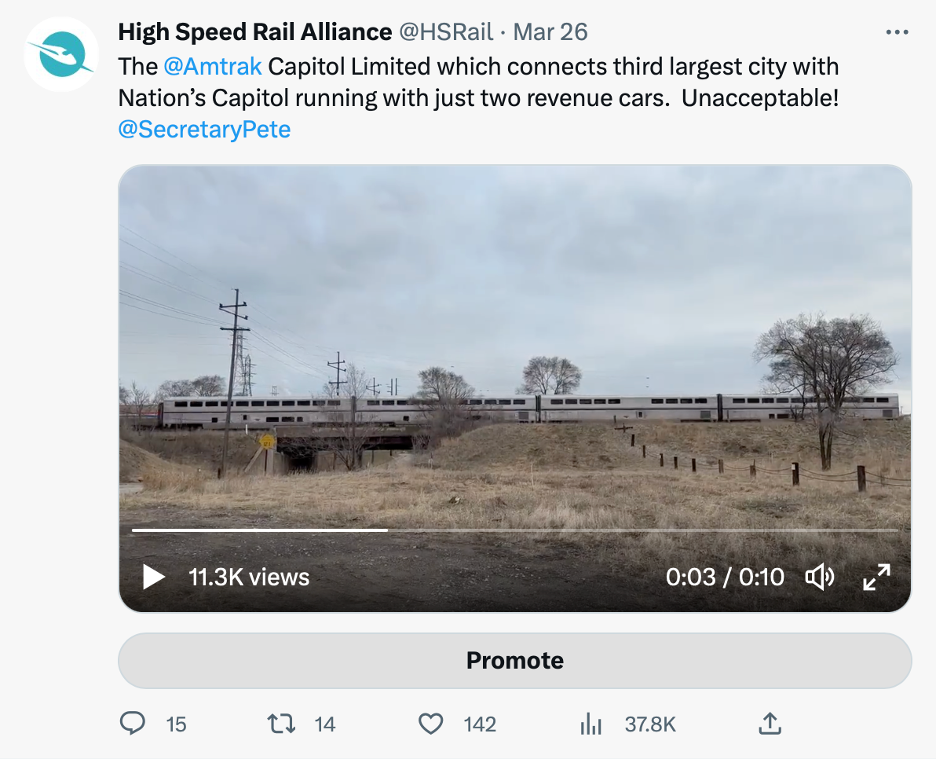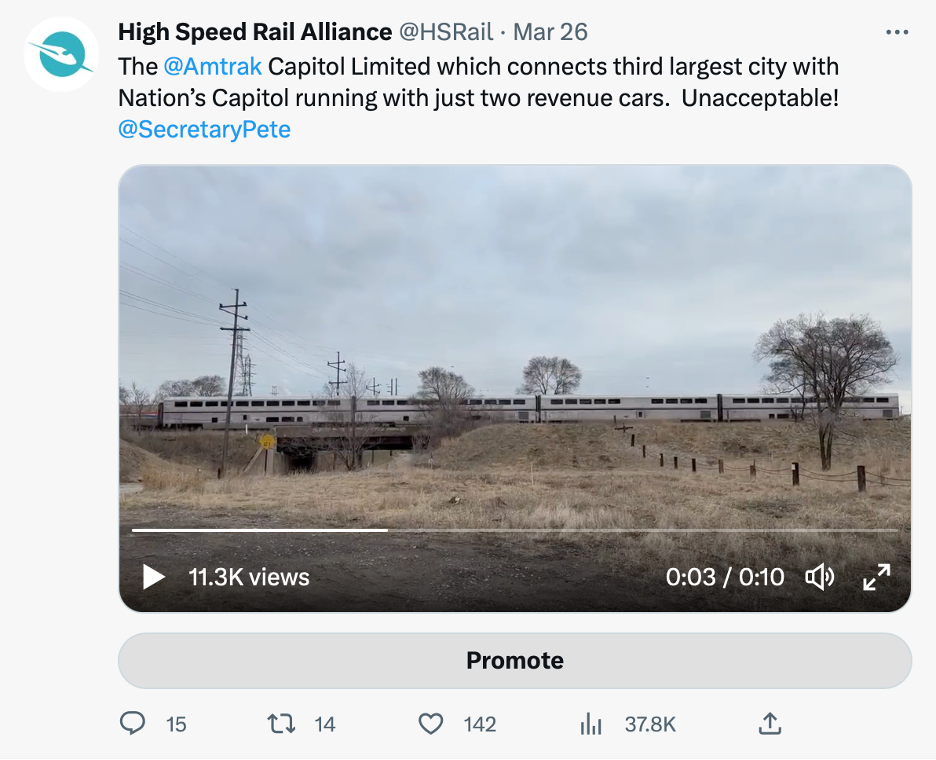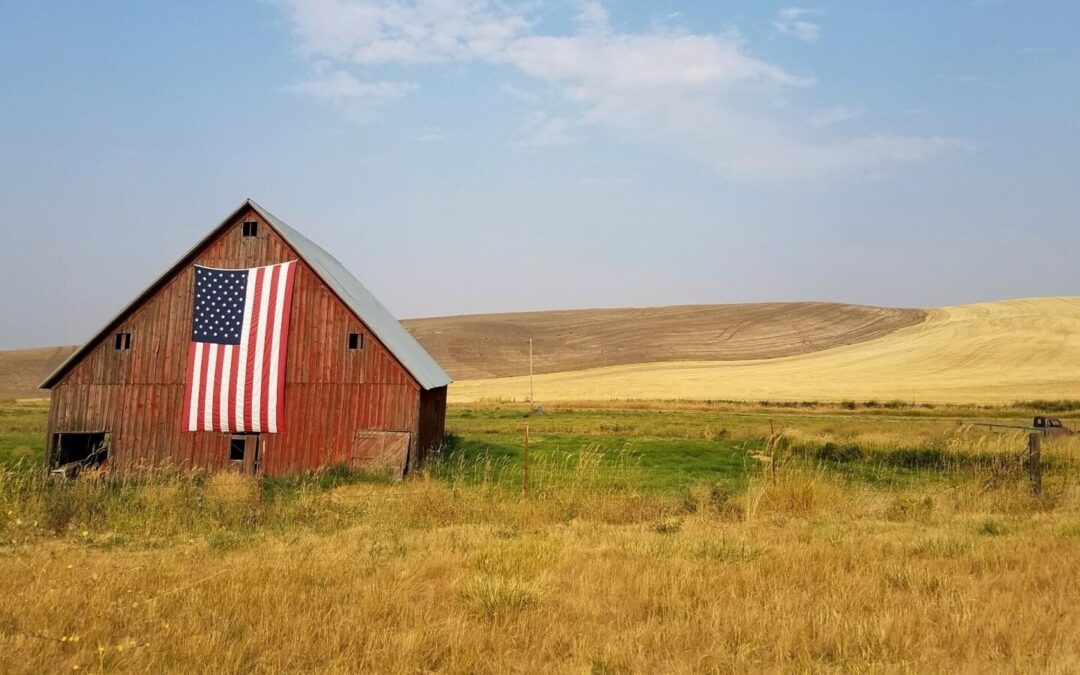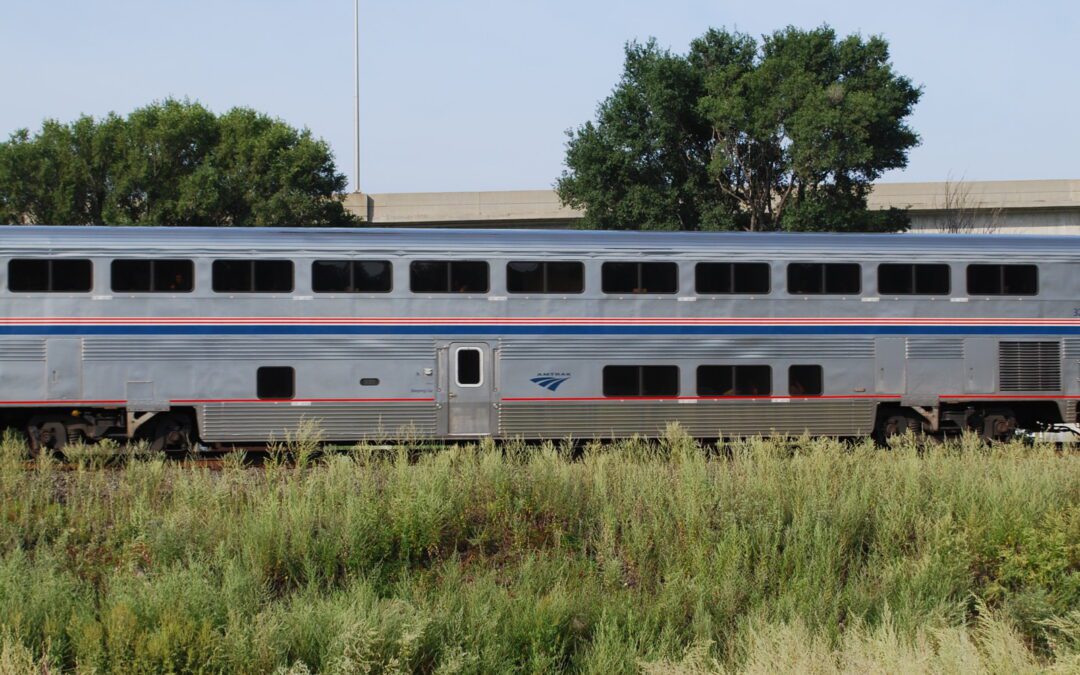How High-Speed Rail Will Reduce Carbon Emissions Getting serious about climate change means getting serious about building great trains. Join Us The best way to cut carbon emissions while expanding our freedom to move Take a look at the numbers below from...

Amtrak Trains Are Too Short
This frame, from a short video made last weekend, shows something upsetting. The Amtrak Capitol Limited has just 2.5 revenue cars that travelers can buy a ticket for: one sleeper car shared by passengers and crew, one full sleeper, and only one coach.
This train connects 136 city pairs, including our third largest city, Chicago, with the nation’s capital. It should have at least 2 sleepers and 3 coaches.
Unfortunately, we know that Amtrak is running lots more short trains like this. One train supporter just emailed us this week, calling a similarly brief glimpse, “certainly not my idea of a long-distance train.”
It’s not just the long-distance fleet. All routes outside the Northeast Corridor have been impacted.
Amtrak could sell a lot more tickets, but they just don’t have the equipment. It is an urgent problem that needs substantial focus.
Why is this happening?
Years of underinvestment have left Amtrak with an aging and shrinking fleet. Amtrak has made the problem worse by sidelining equipment that needs minor repairs.
The Law of Supply and Demand predicts the results: expensive tickets and frequent sell outs.
It’s even worse for sleeper cars. If you can get a reservation, prices can easily exceed $500 or $600 for just one person to make an overnight trip in Amtrak’s smallest private accommodation. For two travelers, Amtrak roomettes can average $900-1400 for a round-trip between major American cities. This costs far more than most plane tickets, and it shouldn’t, because trains are more energy-efficient.
The solution is simple—get Amtrak more equipment, so they can run longer trains, sell more tickets, and bring average prices down.
But this simple solution is not easy, because the United States lacks manufacturing capacity to make this equipment quickly.
We need to break the cycle. Instead of running short trains with expensive tickets, let’s run long trains that make this mode of transportation affordable and attractive for travelers.
The good news is that the Bipartisan Infrastructure Law (BIL) provides a chance to establish new supply chains. If we create a dependable, ongoing market for rail equipment, American manufacturers will rise to the challenge.
The Federal Railroad Administration has launched a study of long-distance trains, aiming to expand this critical service, which serves hundreds of communities throughout the country. Amtrak also has a Request for Information out to potential manufacturers for the new equipment it needs.
These are steps in the right direction. But it could take many years for the full process to play out: choosing vendors, ramping up production, and actually getting new cars into service so that travelers like you can ride them.
We need a sense of urgency.
A top priority for the High Speed Rail Alliance is to establish an ongoing national rail program. Steady planning would anticipate needs for new equipment to expand service, offer more frequent trains, and run at faster speeds. Instead of occasional spikes of funding, a national rail program like this would create a steady, dependable pipeline of orders for new train equipment and foster American manufacturing capacity.
Articles We Enjoyed:
All Aboard: Passenger Rail Is Rolling Along the Atlantic Coast
How One European Country Is Planning a ‘Rail Revolution’
Money Sought for Amtrak Rail Service Between Louisville and Indianapolis (Courier Journal)
Ohio Commission Moves One Step Closer Toward Expanding Passenger Rail Service
Schuylkill River Passenger Rail Authority Submits Application for Federal Funding
The Latest from HSRA
Our Latest Blog Posts
Check out the latest news, updates, and high speed rail insights from our blog!





